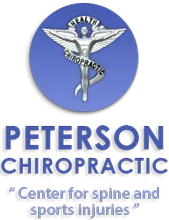Everyone knows that exercise is good for you.1,2 Many people who haven’t exercised in a while (possibly not in many years) want to know whether running will help them get fit. A follow-up question for those willing to take action in the important area of exercise is how to avoid running injuries. The answers to these questions can have a long-term impact on a person’s health and well-being.3
First, running is not for everyone. Also, running is not a better form of exercise than other aerobic activities such as walking, swimming, or biking. For example, older adults who haven’t exercised in 20 years would probably derive more benefit from walking than from running. For such a person, attempting to run regularly might actually cause real problems such as a stress fracture in the lower leg. It’s not that older persons shouldn’t run, but rather older adults who are out-of-shape should use caution if they are choosing to begin running for exercise. Lastly, although runners often believe that what they’re doing is the “best” form of exercise, such an opinion is not factual. The best form of exercise is what works for you. This means doing regular, consistent, vigorous exercise that makes you feel good, empowered, and more alive. This is contrasted with exercise you think you “should” be doing that actually makes you feel tired and lethargic and may, in fact, be injurious.
If you do choose to begin running, the most important recommendation is to start slowly. The key variables are distance and pace, so a beginner should start by lightly jogging at a slow pace for about 10 minutes. If you haven’t done aerobics in a while, 10 minutes will feel like plenty. Even if you’re not out-of-breath, don’t do more. Part of an effective running routine is discipline. Most running injuries result from doing too much. Do enough and no more.
The benefits of running are long-term, so build up your distance and pace carefully, over weeks and months. For example, if you’re running 2 miles a day and feel good, going on a 5-mile run with a friend will probably not have the outcome you’re looking for. Stress fractures, shin splints, and muscle strains are just waiting to happen. The way to prevent running injuries is to be consistent and never do too much. Of course, stuff happens, but you want to cut down the odds of something happening to you. You do that by following your well-designed running plan.
How much exercise is best? For most of us, 30 minutes per day of vigorous exercise, 5 times per week, is sufficient for general health and well-being. Competitive athletes have more complex training schedules, but for everyone else the 30x5 rule works. Your workouts can be longer than 30 minutes, of course, but 30 minutes a day is all we really need. In terms of running, that translates into about 2.5 miles at a nice 12-minute pace. Remember, if you’re just starting out, you need to build up to this level slowly and gradually. Also, running should be done on alternate days. At most, you’ll be running three times per week. Some weeks you’ll only run twice.
The key thing to remember is to have fun. Be consistent, pay attention to what you’re doing, and enjoy the benefits of enhanced health and well-being.
